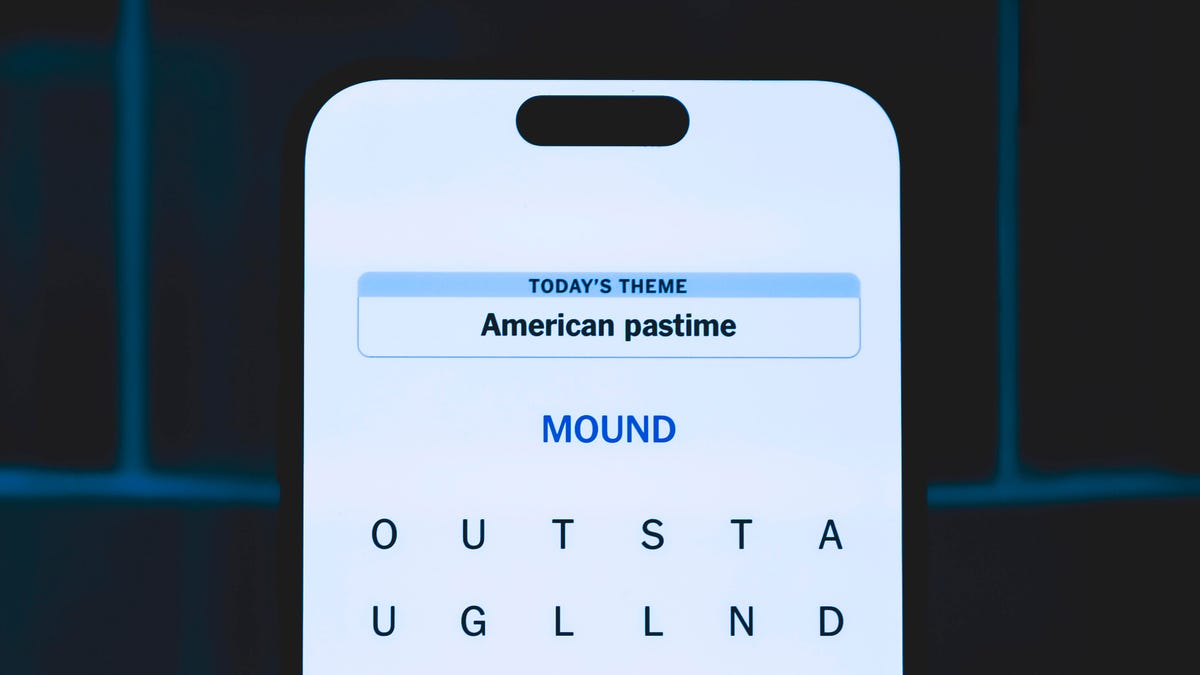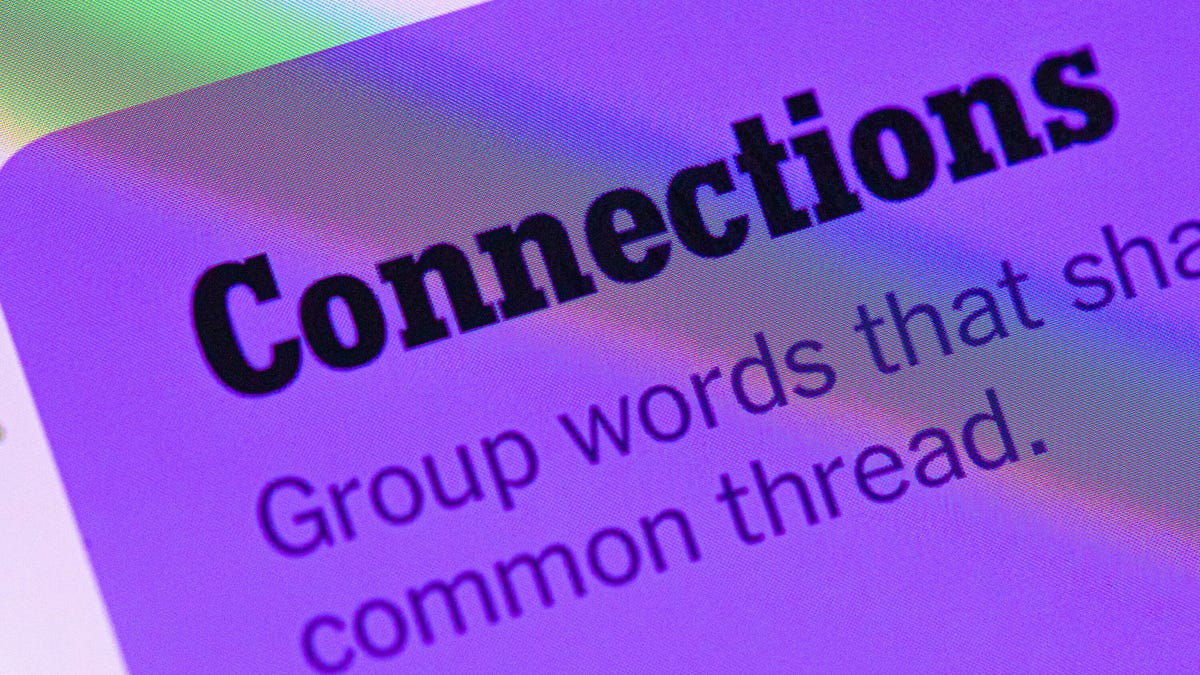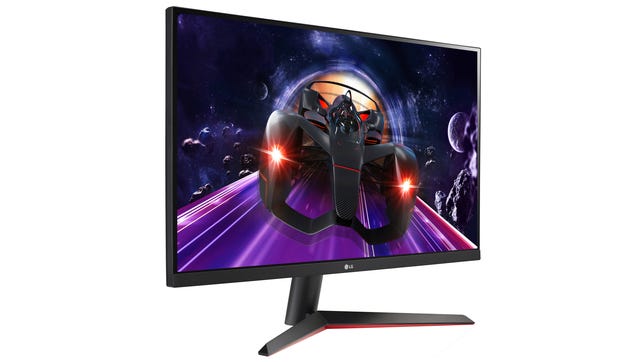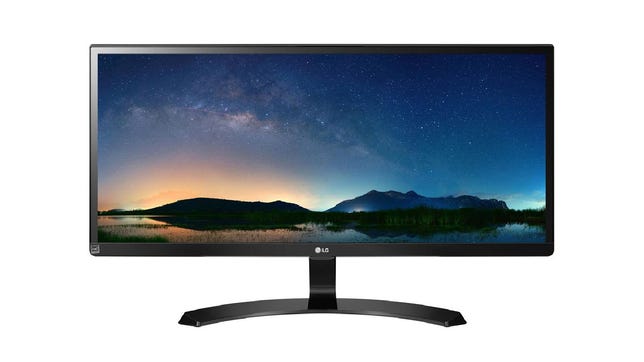Technologies
Best Monitor Under $200 You Can Get for 2023
Monitors are necessary for a large number of employees and students to work efficiently, and you don’t need to spend a fortune to get a good one from LG, Samsung, or Dell.

For remote workers, gamers and creatives, a good monitor is a critical piece of your workstation. Even if you usually work on a laptop, adding a second screen to your setup can make a huge difference in your productivity. And fortunately, you don’t have to drop $500 or more to get your hands on a decent display. We’ve rounded up some of the best monitors on the market right now that you can pick up for less than $200 below.
There are a few things to keep in mind: When buying a budget monitor, you should check out the listing to see what’s included. Make sure it’s not missing items that you would have to purchase separately and that would drive the price above that «cheap monitor» threshold, like a stand or cables. The stand might not be an issue if you’re planning to use the VESA mount to put it on a wall or arm. But in that case, you should ensure the mount screws on the back of the monitor match yours: The bulk of these have 100×100-millimeter mounts, but in some cases, they have 200x200mm or 75x75mm mounts — or they don’t support a VESA mount at all.
Got a Mac? If it’s an old MacBook Pro with an HDMI port, or an iMac or Mac Mini, you won’t have a problem. MacBooks with USB-C/Thunderbolt 3 connections will require an adapter or cable with conversion built-in because they won’t have a dedicated display port. You may also need to fiddle with the resolution and scaling settings in Mac OS, since it natively prefers a 16:10 aspect ratio, not the 16:9 aspect ratio that’s much more popular on Windows.
Read more: How to Buy a Monitor for Gaming or Working From Home
Unless you’re a hardcore gamer or creative professional, many of the most technical specs — latency and color gamut, for example — won’t really matter to you (though many of these could serve as a budget gaming monitor). You should always take them with a grain of salt, anyway.
For less than $200, you can generally expect to get:
- A maximum of 1,920×1,080-pixel screen resolution (dubbed by marketers as «Full HD resolution» and also referred to as 1080p or 2K for its roughly 2,000 pixels across). Below 27 inches, that’s fine. At 27 inches or larger, it’s not great except in one important case. Essentially, the reason you buy a 27-inch monitor over a 24-inch is usually because you want to fit more on to it. But if it’s using the same number of pixels, it just makes everything bigger — it doesn’t put more on the screen. And because it’s spreading them across a bigger screen, some people (like me) may get annoyed at seeing the pixel grid. I find a pixel density (the number of pixels per inch, or ppi) of at least 90 a good balance, but YMMV. The exception? If you actually need things like text to be bigger, such as if you have impaired vision.
- A stand that lets you tilt the computer monitor, not raise or lower it. We want to reduce eye strain and optimize ergonomics wherever possible.
- While there might be one or two larger, the monitors go mostly up to 27 inches.
- Between 250 and 350 nits of brightness. That should be fine for most uses.
- Up to 75Hz refresh rate for an IPS (which stands for in-plane switching) monitor or 144Hz refresh rate for a TN (twisted nematic). A high refresh rate matters if you’re planning to play a lot of FPS, racing, fighting or other motion-sensitive gaming. An IPS monitor is better for general-purpose use, since it’s superior for off-angle viewing and typically has better color. But the fastest IPS monitor you’ll find for the money is 75Hz. A TN monitor is better for fast gaming and a better gaming experience; it has a higher contrast ratio, but poorer viewing angle — color accuracy and contrast changes as you move further from looking straight-on.
- If it comes with built-in speakers, don’t assume they’re a replacement for real standalone versions. They’re occasionally better than expected, but think of the speakers as a nice perk for basic system sounds or videoconferencing and consider it a windfall if they’re satisfactory for entertainment. (I’ve been relatively impressed with the speakers in BenQ’s EW series.)
- A lot of these cheap monitors support AMD’s adaptive refresh FreeSync technology, which works with AMD’s graphics processors for syncing game frame rates with the display.
- A curved monitor, which can make a wide display fit into your field of view without requiring you to sit too far back, isn’t worth paying more for in monitors 27 inches or smaller; then the bezels are too far within your field of view. One potential exception is if you plan to span across three identical monitors for gameplay. Then they wrap around you better than three flat screens.
Upping your budget to between $200 and $300 will bring more 32-inch screen size options and 2,560×1,440 resolution. And, of course, the more you’re willing to spend, the more you’re likely to find something in stock and ready to ship.
Read more: Best Speakerphone for Working From Home
Samsung
If you are looking for budget gaming monitors, this budget FHD monitor’s 75Hz refresh gives you a little latitude for gaming and has an IPS panel for better color and viewing angle in the sea of VA competitors; plus, this cheap gaming monitor option is pretty attractive with thin bezels and a stand that’s less clunky-looking than some. You’ll get an HDMI cable in the box, and it has a 100×100 VESA mount. There are some drawbacks, such as some backlight bleed that buyers have noticed, and it has an HDMI 1.4 connection instead of 2.0 (if you care), plus the stand only allows the screen to tilt, not raise or lower.
LG
The LG is a solid, attractive general-purpose choice with some gaming perks. Though I’d hardly call it a gaming monitor, it has features for a good gaming experience, such as AMD FreeSync support, the ability to overdrive the response time, a 1ms motion-blur reduction mode and an optional center crosshair. It’s slightly brighter than most, and there’s a Photo mode that seems to improve the color accuracy. It’s got a VGA connector in addition to the two HDMIs (though that’s not uncommon in this price range) if you’ve got a really old device to connect. The 24-inch is a smaller version of the 27-inch monitor we tested which has since been discontinued (though still available in places at a much higher price).
LG
This looks to be a more recent follow-up to the 27MK600M-B we tested, with a different stand and a DisplayPort connection instead of the second HDMI. Like that one, it’s got some gaming perks, identical to the 24-inch LG I mentioned above.
LG
This big ‘un doesn’t have ultraskinny bezels or a curved screen — it’s four years old — but when you consider its size, a 75Hz refresh rate and USB-C DisplayPort connector (as well as two HDMI 1.4 ports), you get a lot for the money. It often lists for closer to $300, but right now you can snag it for less than $200 at Amazon and Walmart, making it a pretty good value for the features. There’s a slightly more game-oriented model for $200, the 29WP60G-B, with FreeSync support, thinner bezels and a slightly sleeker design, but don’t get FOMO over the «HDR» you’ll see in the name; it has the same color and brightness specs as the cheaper model. LG has simply added decoding hardware that lets it more-or-less intelligently cram real HDR content to the dim, small gamut display, which is never pretty.
Gigabyte
I don’t like curved 27-inch monitors or VA panels much, but in a sea of 75Hz options, the Gigabyte is a refreshing 165Hz. That makes it a lot more suited to gaming than all the 75Hz models. It also has a greater-than-sRGB color gamut, low-power stereo speakers and a USB hub, which you rarely find together in this price class. The lowest price you’ll find on this monitor right now is $230, but we’re keeping it on this list for the moment as we’ve often seen it discounted to $200 or even lower.
More work-from-home and computing recommendations
- 7 Must-Have Ergonomic Upgrades for Your Home Office
- Best Laptop for 2023
- The 7 Best Blue Light Blocking Glasses to Prevent Eye Fatigue
- Best VPNs for 2023
- 3 Great VPNs for Xbox in 2023
- Best Standing Desk Converters for 2023
- Best Chromebook Deals: Save $200 on Acer Spin 514 and Samsung Galaxy 2 and More
- Want to Learn Python? We Found 5 Online Coding Courses for Beginners
- The Best Monitors According to the CNET Staff Who Use Them
Technologies
Today’s NYT Strands Hints, Answers and Help for Nov. 28 #635
Here are hints and answers for the NYT Strands puzzle for Nov. 28, No. 635.

Looking for the most recent Strands answer? Click here for our daily Strands hints, as well as our daily answers and hints for The New York Times Mini Crossword, Wordle, Connections and Connections: Sports Edition puzzles.
Today’s NYT Strands puzzle is pretty tricky. If you’re not familiar with certain superstitious beliefs, you might not find all the answers. And some of the answers are difficult to unscramble, so if you need hints and answers, read on.
I go into depth about the rules for Strands in this story.
If you’re looking for today’s Wordle, Connections and Mini Crossword answers, you can visit CNET’s NYT puzzle hints page.
Read more: NYT Connections Turns 1: These Are the 5 Toughest Puzzles So Far
Hint for today’s Strands puzzle
Today’s Strands theme is: If all else fails…
If that doesn’t help you, here’s a clue: Don’t tell, it won’t come true.
Clue words to unlock in-game hints
Your goal is to find hidden words that fit the puzzle’s theme. If you’re stuck, find any words you can. Every time you find three words of four letters or more, Strands will reveal one of the theme words. These are the words I used to get those hints but any words of four or more letters that you find will work:
- GLUB, RATS, TARN, DALE, FONT, FOUNT, LASH
Answers for today’s Strands puzzle
These are the answers that tie into the theme. The goal of the puzzle is to find them all, including the spangram, a theme word that reaches from one side of the puzzle to the other. When you have all of them (I originally thought there were always eight but learned that the number can vary), every letter on the board will be used. Here are the nonspangram answers:
- DANDELION, STAR, COIN, FOUNTAIN, LADYBUG, EYELASH
Today’s Strands spangram
Today’s Strands spangram is MAKEAWISH. To find it, start with the M that’s three letters down on the far right, and wind backwards.
Technologies
Today’s NYT Connections Hints, Answers and Help for Nov. 28, #901
Here are some hints and the answers for the NYT Connections puzzle for Nov. 28, #901.

Looking for the most recent Connections answers? Click here for today’s Connections hints, as well as our daily answers and hints for The New York Times Mini Crossword, Wordle, Connections: Sports Edition and Strands puzzles.
Today’s NYT Connections puzzle is kind of tough. If you need help sorting the answers into groups, you’re in the right place. Read on for clues and today’s Connections answers.
The Times now has a Connections Bot, like the one for Wordle. Go there after you play to receive a numeric score and to have the program analyze your answers. Players who are registered with the Times Games section can now nerd out by following their progress, including the number of puzzles completed, win rate, number of times they nabbed a perfect score and their win streak.
Read more: Hints, Tips and Strategies to Help You Win at NYT Connections Every Time
Hints for today’s Connections groups
Here are four hints for the groupings in today’s Connections puzzle, ranked from the easiest yellow group to the tough (and sometimes bizarre) purple group.
Yellow group hint: Appropriate.
Green group hint: I win!
Blue group hint: Musical instrument.
Purple group hint: Time to talk.
Answers for today’s Connections groups
Yellow group: Fitting.
Green group: Achieve victory over.
Blue group: Parts of an electric guitar.
Purple group: Phonetic elements of speech.
Read more: Wordle Cheat Sheet: Here Are the Most Popular Letters Used in English Words
What are today’s Connections answers?
The yellow words in today’s Connections
The theme is fitting. The four answers are fair, just, proper and right.
The green words in today’s Connections
The theme is achieve victory over. The four answers are beat, best, take and worst.
The blue words in today’s Connections
The theme is parts of an electric guitar. The four answers are fret, peg, pickup and string.
The purple words in today’s Connections
The theme is phonetic elements of speech. The four answers are intonation, loudness, rhythm and stress.
Technologies
Anker’s New MagSafe Car Mount Keeps Your Phone Cool While Charging, and It’s 30% Off for Black Friday
Get wired-like charging speeds and MagSafe compatibility with Anker’s wireless car charging bundle for $62.99.
Black Friday is the best time of the year to upgrade the little essentials that make your everyday tech life more pleasant. I’ve found the perfect deal to amp up the phone charging setup in your car. This Anker MagSafe wireless car charging bundle is 30% off for the holidays, and it gives your iPhone a fast and steady way to power up while you navigate. It delivers up to 25-watt wireless charging speeds and with onboard active cooling, your phone stays comfortable to the touch.
Get it now for $62.99 verses the list price of $89.99.
What sets this charger apart is that its performance and cooling tech is built into a surprisingly compact package. The stand uses an ultra-strong Qi2 magnetic lock to keep your phone secure through bumps and turns. You can even tilt the mount and switch between portrait and landscape modes for navigation without blocking the view. The bundle has everything you need to get started including a 60-watt dual-USB-C charger, an adequately long USB-C cable, and cable organizers for a clean setup. Anker also includes a two-year warranty for peace of mind.
If you are getting your car prepped up for driving to a holiday vacation or just need a faster charging mount for your daily commute, this deal makes a lot of sense. CNET’s experts are also tracking more Black Friday and Cyber Monday picks across Apple products, headphones, and more, so you can score more savings before the sales season wraps up.
MOBILE DEALS OF THE WEEK
-
$749 (save $250)
-
$475 (save $175)
-
$499 (save $300)
-
$900 (save $400)
Why this deal matters
A high quality charger is a great addition to any car to speedily top up your phone on the go. You will especially want to look out for options from a top-tier brand like Anker for its fast charging speeds and reliability. This Black Friday deal is an excellent opportunity to save big on a staple car accessory. With holiday shopping heating up and tech accessories being one of the most popular categories, we expect the deal to sell out quick. So don’t wait too long before jumping on it.
Don’t miss any of our unbiased tech content and lab-based reviews. Add CNET as a preferred Google source.
Join Our Daily Deals Text Group!
Get hand-picked deals from CNET shopping experts straight to your phone.
By signing up, you confirm you are 16+ and agree to receive recurring marketing messages at the phone number provided. Consent is not a condition of purchase. Reply STOP to unsubscribe. Msg & data rates may apply. View our Privacy Policy and Terms of Use.
-

 Technologies3 года ago
Technologies3 года agoTech Companies Need to Be Held Accountable for Security, Experts Say
-

 Technologies3 года ago
Technologies3 года agoBest Handheld Game Console in 2023
-

 Technologies3 года ago
Technologies3 года agoTighten Up Your VR Game With the Best Head Straps for Quest 2
-

 Technologies4 года ago
Technologies4 года agoBlack Friday 2021: The best deals on TVs, headphones, kitchenware, and more
-

 Technologies4 года ago
Technologies4 года agoVerum, Wickr and Threema: next generation secured messengers
-

 Technologies4 года ago
Technologies4 года agoGoogle to require vaccinations as Silicon Valley rethinks return-to-office policies
-

 Technologies4 года ago
Technologies4 года agoOlivia Harlan Dekker for Verum Messenger
-

 Technologies4 года ago
Technologies4 года agoiPhone 13 event: How to watch Apple’s big announcement tomorrow





